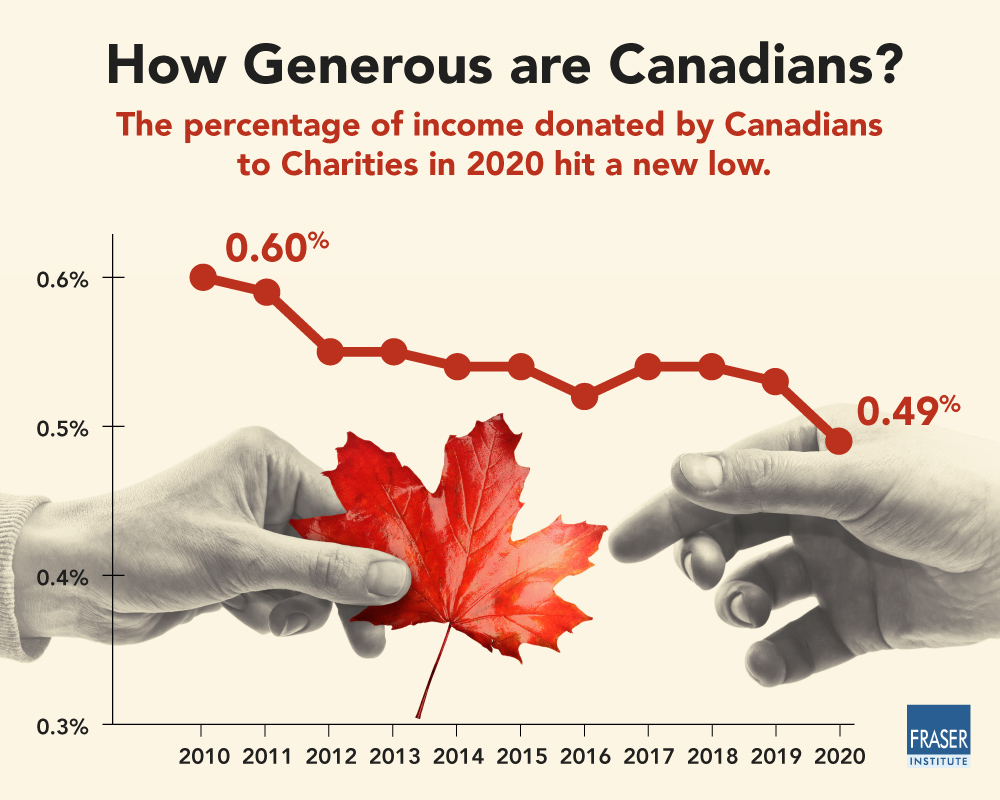But where in Canada are the highest and lowest numbers of generous people?

When budgets are tighter, it’s perhaps expected that generosity suffers, but Canadians have been giving less for more than a decade.
A new study from the Fraser Institute reveals that donating to charities among Canadian tax filers is now at a 20-year low having been in decline since a peak in 2006.
Looking at the 2020 tax year, the think tank’s senior policy analyst, Jake Fuss, found that Canadians donated 0.49% of their income, the lowest share since 2000 and down from the peak of 0.76% in 2006.
The downward trajectory for giving has continued every year from 2007.
Nationally, the percentage of Canadian tax filers donating to charity has fallen from 25.5% in 2000 to 19.1% in 2020.
“The holiday season is a time to reflect on charitable giving, and the data shows Canadians are consistently less charitable every year, which means charities face greater challenges to secure resources to help those in need,” said Fuss, who co-authored ‘Generosity in Canada: The 2022 Generosity Index.’
Who’s more generous?
Regionally, giving swings widely from more than 20% of tax filers who gave to charity in 2020 in Manitoba to 16% in Newfoundland and Labrador.
Manitoba also donated the highest percentage of its aggregate income to charity among the provinces (0.73%) while Quebec donated the lowest (0.24%). That equates to an average of $2,398 in Manitoba compared to just $840 in Quebec.
“A smaller proportion of Canadians are donating to registered charities than what we saw in previous decades, and those who are donating are donating less,” said Fuss. “This decline in generosity in Canada undoubtedly limits the ability of Canadian charities to improve the quality of life in their communities and beyond.”




